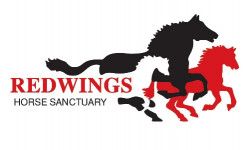Posted: 17th September 2019 | Back to news feed

Who would have believed trees could be so devastating to horse health? Atypical myopathy is also known as ‘sycamore poisoning’ as horses develop the condition after eating the seeds, leaves or seedlings of sycamore or box elder trees. These plants contain Hypoglycin A, which is highly toxic to horses and the disease can quickly become fatal so prevention and awareness are key.

Recognising atypical myopathy
Myopathy describes compromised muscle function. Atypical myopathy is one of the most severe attacks on muscle function as it can affect muscles of the heart and lungs as well as postural muscles that enable the horse to stand and move.
If an affected horse is to have any chance of recovery, immediate veterinary treatment is required and vets will always class atypical myopathy as an emergency. To help catch the disease early, be alert to signs of:
- Muscle weakness, stiffness or tremors
- Sweating
- Lethargy and dullness
- Laboured or rapid breathing
- Choke or problems swallowing
- Red or brown urine
- Whinnying or head tossing
- Rapid heartbeat
Atypical myopathy can be confused with colic, but in either case urgent veterinary treatment is vital. Even with treatment, there is no guarantee of survival as the damage caused by Hypoglycin A is swift and severe. Around 70-90% of horses who develop atypical myopathy do not recover.
The risk
The relationship between sycamore trees, Hypoglycin A and horses is not yet fully understood, and research is ongoing. Sycamore seeds and leaves contain varying levels of Hypoglycin A, and not all horses that are grazed where sycamore trees are present become ill. There may also be environmental factors - such as damp ground- that increase the toxicity of seeds and leaves.
Preventing atypical myopathy
Ensuring horses are not able to ingest sycamore or box elder trees is the best way of preventing atypical myopathy. Although the majority of cases occur in the autumn when trees shed their seeds and leaves, there is also a rise in cases during spring when seedlings emerge. It is important to think of sycamore and box elder trees as presenting a risk throughout the year.
- Where possible, choose grazing without sycamore in close proximity
- Check your paddocks regularly and remove all sycamore seeds, leaves and seedlings, especially after windy weather
- Provide forage in paddocks in the autumn to reduce time spent grazing
- Don’t overstock paddocks
For more information and to help hone your sycamore identification skills, go to Redwings’ atypical myopathy blog [link: https://www.redwings.org.uk/news-and-views/guide-to-atypical-myopathy]
Caring for trees
Although sycamore is not native to UK, it is now an established part of our landscape and wildlife habitats. For more information on balancing the need to preserve trees as well as protecting horse health, download a joint statement from the British Horse Society and the Arboreal Association here - [LINK: www.trees.org.uk/Trees.org.uk/media/Trees-org.uk/Documents/BHS-Atypical-Myopathy-Policy-2017_1.pdf]
Raise awareness
For any horse owners wishing to raise awareness of atypical myopathy, you can download and print a poster created by the National Equine Welfare Council (NEWC), endorsed by the British Equine Veterinary Association (BEVA). Download your copy here – [LINK: http://www.newc.co.uk/wp-content/uploads/2012/01/AMposter-rev3.pdf]
The Equestrian Index newsfeed is compiled from articles submitted by advertising members and expresses the opinions of those members. Watsons Directories Ltd shall not be held liable for any inaccuracies or mis-statements therein.